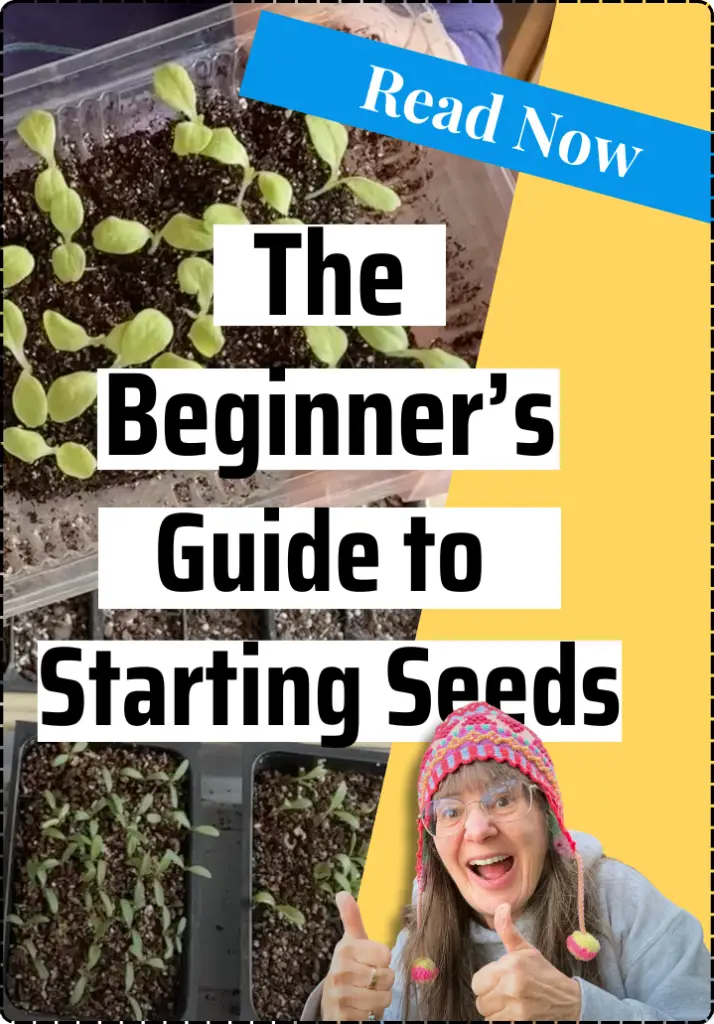If you’ve ever started seedlings indoors, you might have encountered the frustrating issue of leggy seedlings—those weak, spindly plants that seem to stretch endlessly towards the light and look pinched or bent at the soil line like they’re about to topple over. But don’t worry, you’re not alone! Many gardeners, including myself, have faced this challenge.
In this blog, you’ll learn some friendly tips and tricks to help you grow strong, healthy seedlings that look like they came straight from a professional greenhouse. Already got some seedlings started? No problem, you’re going to have some tips and treasures for keeping them safe and maximizing your harvest all throughout the growing season.
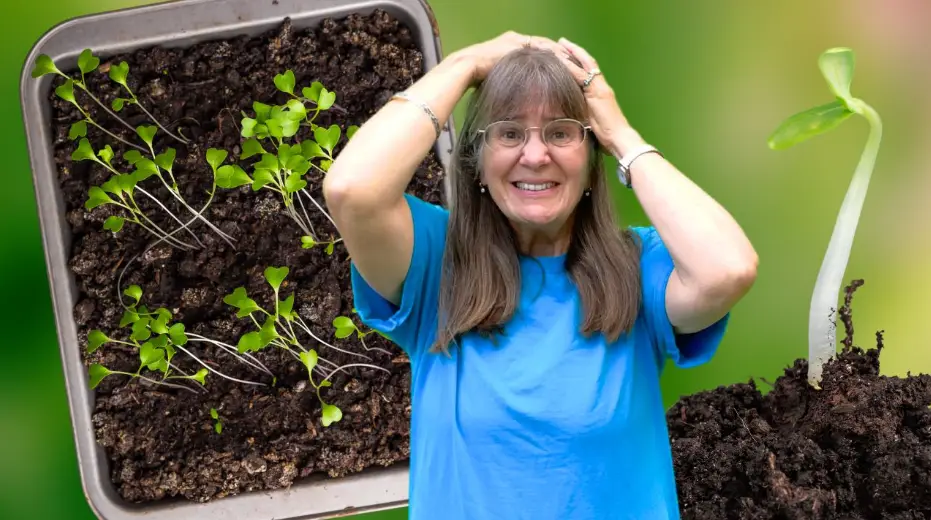
What is a “leggy seedling”?
Leggy seedlings are those weak, spindly plants that often topple over due to their thin and overstretched stems. We often see this when seedlings haven’t been getting enough light, resulting in pale and fragile plants. It can be very difficult to save leggy seedlings, so the best thing to do is prevent it before it happens!
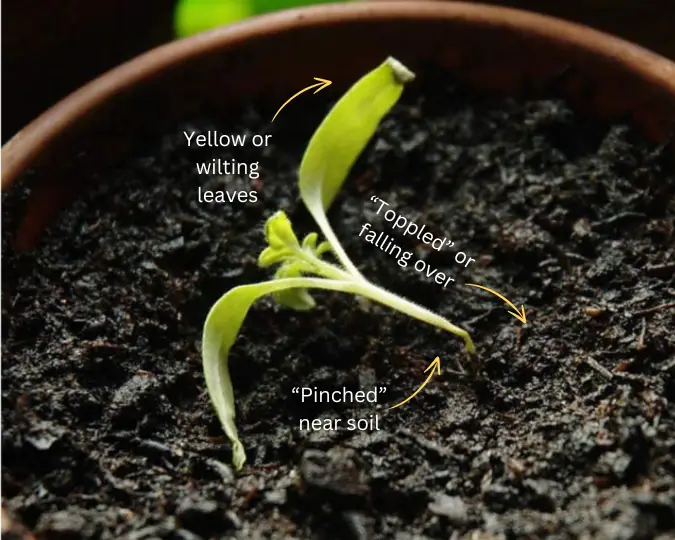
Damping-off
Spindly, weak seedlings are prone to damping-off, a fungal infection that attacks young plants at the soil level. Two main factors that contribute to damping-off are:
- Inadequate light
- Lack of airflow
For more information on preventing damping-off, read The Beginner’s Guide to Starting Seeds Indoors
To help prevent damping-off, gently brush the seedlings with your hand and set up a fan to keep the air moving.
Pro tip: Make sure to fill your pots as close to the top as possible. Leaving too much empty space between the soil and the top of the pot can create stagnant air, which allows the bacteria and fungi that cause damping-off to thrive.
3 reasons why your seedlings aren’t growing
Not enough light
Seeds started indoors often need supplemental light. Seedlings grown in weak winter light tend to become lanky, pale, and terribly weak. Then, when planted outside, they can easily topple over with the slightest breeze!
To grow healthy and strong, seedlings need 14-16 hours of light from the moment they germinate. Since it’s challenging for indoor seedlings to receive this amount of natural light, I recommend using additional lighting. Fluorescent and LED lights can do the trick!
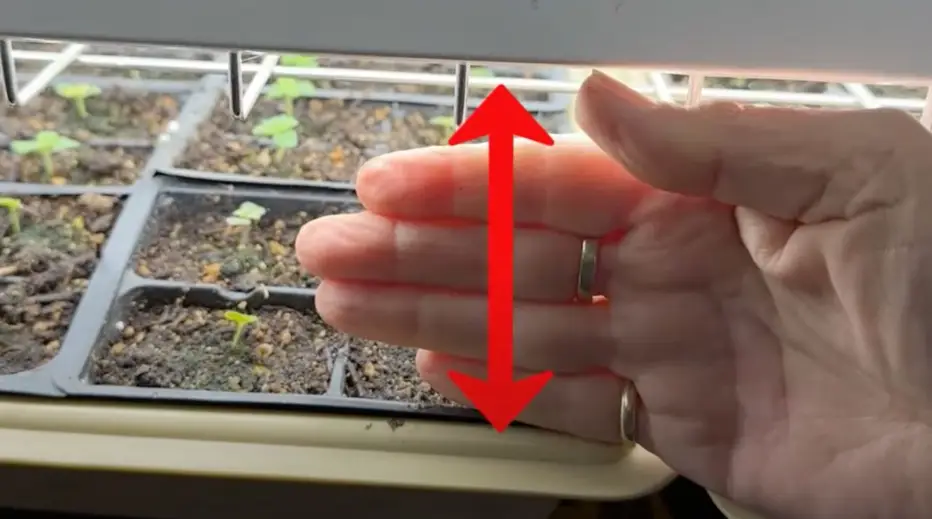
If you do add lights, make sure the light is even and close to the seedlings. If the light source is too far away, seedlings will grow tall to reach the light, resulting in… leggy seedlings! Use your hand to measure the distance (see photo above). Any further away and those babies will have to start stretching.
FAQ: Can I grow seedlings on a windowsill?
I don’t recommend growing seedlings on a windowsill because they are poorly lit, especially during the winter.. Plant stems lean and stretch toward the light and eventually develop into weaklings. If window sills are your only option though, rotate the containers daily so they don’t have to stretch and reach for the light quite as much. And consider adding a reflector to bounce light back onto the seedlings.
Lack of nutrients
Proper nutrients are essential for the healthy growth of any plant, from the time seeds start germinating all through their growth. Seedlings are best grown in seed-starting mixes, which are typically light and fluffy. They need to be fed regularly until they are transplanted into richer, more nourishing soil.
Make sure not to germinate seedlings in overly rich soil; we want to find the right balance! Seedlings are ready for a richer mix once transplanted into larger containers or even the garden. Adding compost to the mix creates a living soil, flourishing with nutrients and microbes, that support the growth of strong, healthy seedlings and mature plants alike.
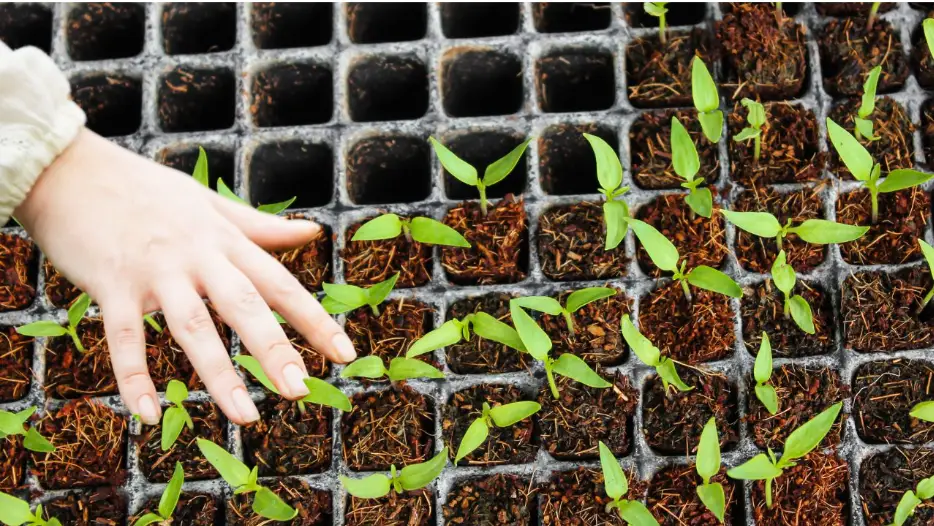
Not enough airflow
Just like us, seedlings need air to breathe! Along with using a fan, one of my favorite ways to help seedlings grow strong and sturdy is to gently run my hand over the tops of the seedlings to mimic a soft breeze.




